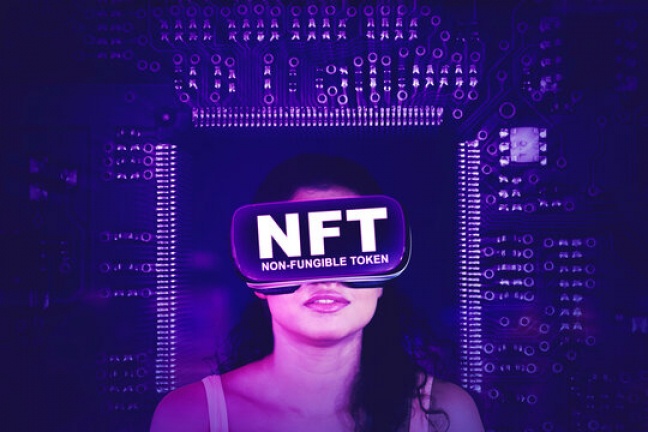The world of non-fungible tokens (NFTs) has taken the digital space by storm, revolutionizing how we perceive and trade digital assets. If you're considering launching your own NFT marketplace in 2024, you're in the right place. This comprehensive guide will walk you through the essential steps and development aspects to ensure a successful launch and sustainable growth in the competitive NFT market.
Understanding the NFT Marketplace Landscape
Before delving into the development process, it's crucial to understand the current state of the NFT marketplace landscape. In 2024, the market is expected to be more mature and diverse, with various platforms catering to specific niches and artistic communities. Analyze successful platforms like OpenSea, Rarible, and Mintable to identify trends, user preferences, and features that resonate with the community.
- Market Research and Target Audience
Begin by conducting thorough market research to identify your target audience and their preferences. Understand the types of digital assets your marketplace will support – whether it's art, music, virtual real estate, or other collectibles. Knowing your audience will help shape the development process and make informed decisions regarding features, user interface, and marketing strategies.
- Blockchain Integration
Choosing the right blockchain is a critical decision that directly impacts your NFT marketplace's functionality, security, and scalability. Ethereum remains a popular choice, but consider alternatives like Binance Smart Chain, Flow, or Polygon for lower transaction fees and faster processing times. Each blockchain has its strengths and weaknesses, so select one that aligns with your project's goals.
- Smart Contracts Development
Smart contracts form the backbone of any NFT marketplace, enabling the creation, transfer, and ownership verification of NFTs. Engage experienced blockchain developers to create robust and secure smart contracts. Consider implementing standards like ERC-721 or ERC-1155, ensuring compatibility with a wide range of wallets and platforms.
- User Authentication and Security
Security is paramount in the development of your NFT marketplace. Implement secure user authentication mechanisms, such as two-factor authentication (2FA) and OAuth, to safeguard user accounts. Employ encryption protocols to protect sensitive data and regularly audit your platform for potential vulnerabilities.
- User Interface (UI) and User Experience (UX) Design
An intuitive and visually appealing UI/UX design is crucial for attracting and retaining users. Collaborate with experienced designers to create a seamless and user-friendly interface. Ensure easy navigation, straightforward onboarding processes, and a responsive design that caters to both desktop and mobile users.
- Wallet Integration
Simplify the user experience by integrating popular cryptocurrency wallets like MetaMask or Trust Wallet. Wallet integration allows users to seamlessly connect their wallets, view their NFT collections, and participate in transactions without leaving your platform.
- Search and Discovery Features
Implement robust search and discovery features to help users find the NFTs they're interested in. Incorporate filters, categories, and sorting options, and consider adding recommendation algorithms to enhance user engagement.
- Payment Gateway Integration
Enable seamless transactions by integrating reliable and widely-used payment gateways. Provide multiple payment options, including cryptocurrencies and fiat currencies, to cater to a broader user base.
- Legal Compliance
Understand and adhere to the legal requirements and regulations surrounding NFTs in your target markets. Consult legal experts to ensure your NFT marketplace complies with intellectual property laws, tax regulations, and data protection policies.
- Community and Social Features
Foster a sense of community within your NFT marketplace by incorporating social features. Allow users to follow their favorite artists, join discussions, and share their collections on social media. Building a strong community can contribute significantly to the success and sustainability of your platform.
- Scalability and Performance Optimization
Plan for scalability from the outset to accommodate potential growth in user activity. Optimize your platform's performance by leveraging efficient coding practices, utilizing Content Delivery Networks (CDNs), and regularly monitoring and upgrading your infrastructure.
- Marketing and Launch Strategy
Develop a comprehensive marketing strategy to promote your NFT marketplace before and after launch. Utilize social media, influencer partnerships, and targeted advertising to create awareness. Consider hosting exclusive drops, collaborations, or events to generate buzz and attract early adopters.
Conclusion
Launching an NFT marketplace in 2024 requires a strategic blend of technological prowess, market understanding, and community engagement. By following the development essentials outlined in this guide, you'll be well-equipped to navigate the evolving NFT landscape and position your platform for success. Stay attuned to market trends, gather user feedback, and be agile in adapting your platform to meet the ever-changing demands of the dynamic NFT ecosystem. Good luck on your journey to becoming a key player in the exciting world of NFTs!


No comments yet